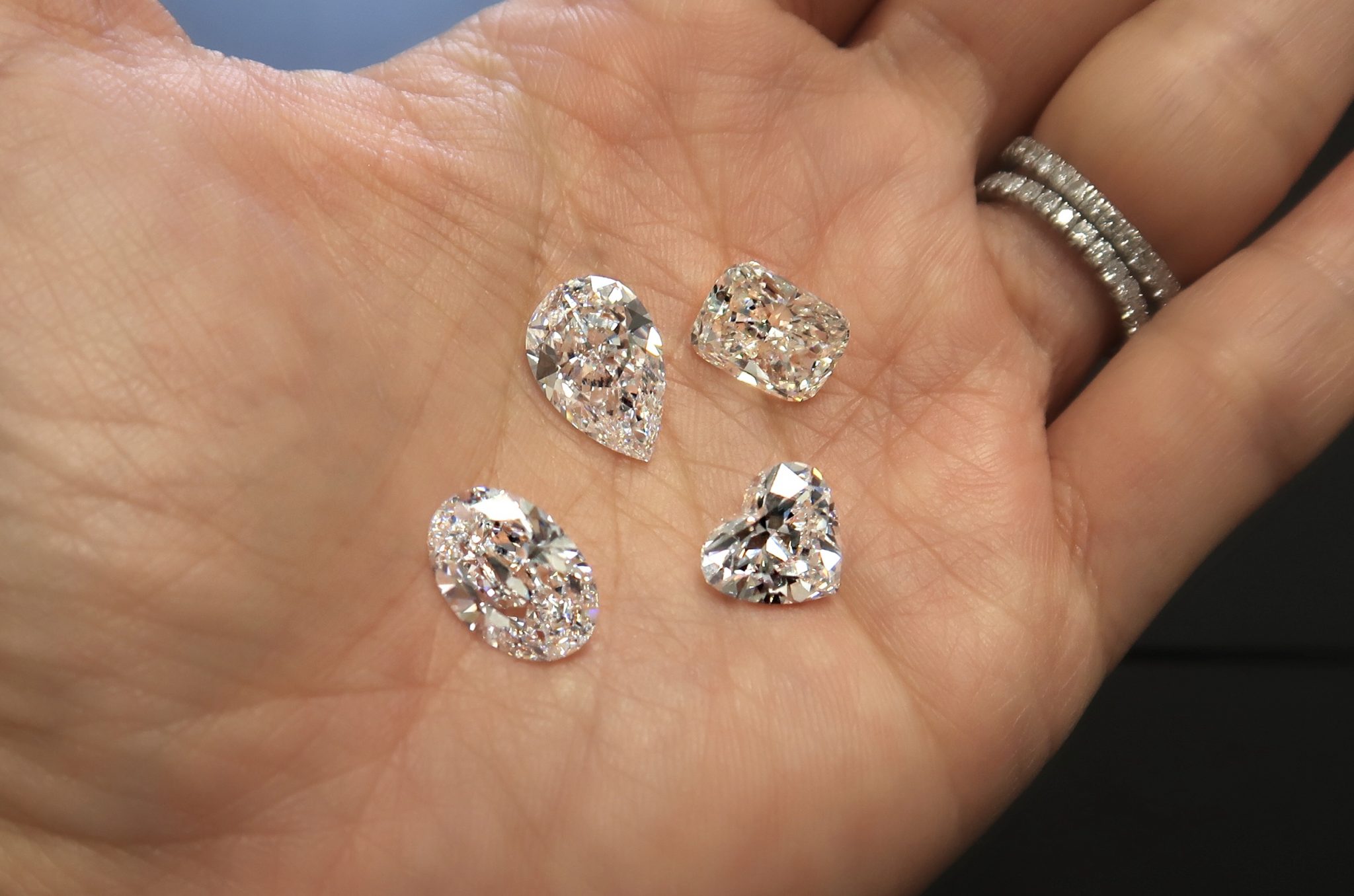Introduction to Lab Diamond Substitutes
Lab diamond substitutes encompass a variety of gemstones created in controlled environments to mimic the brilliance and elegance of natural diamonds. Unlike their mined counterparts, these alternatives are crafted using advanced technology, ensuring both quality and ethical sourcing. As awareness of sustainability grows, so does the demand for these ethical luxury options.
Types of Lab Diamond Substitutes
Moissanite
Moissanite stands out for its exceptional brilliance, often surpassing that of diamonds. This silicon carbide gemstone offers remarkable durability, making it an ideal choice for everyday wear. While some may appreciate its fiery sparkle, others might find its double refraction slightly different from diamonds.
White Sapphire
Known for its clarity and colorlessness, white sapphire resembles the icy purity of diamonds. As a natural gemstone, it offers a compelling alternative for those seeking a close approximation of a diamond’s brilliance without the ethical concerns associated with mining.
Cubic Zirconia (CZ)
Cubic Zirconia, or CZ, remains a popular choice due to its affordability and versatility. This synthesized cubic crystalline form of zirconium dioxide closely resembles diamonds visually but differs significantly in hardness and durability. CZ is favored for its affordability, allowing for larger stones and intricate designs at a fraction of the cost of diamonds.
Comparison with Natural Diamonds
When comparing lab substitutes with natural diamonds, several factors come into play. While diamonds are renowned for their hardness on the Mohs scale and natural origins, lab substitutes offer comparable visual appeal at lower price points. However, they may differ in longevity and resale value, which are crucial considerations for prospective buyers.
Durability and Longevity
In terms of durability, lab substitutes vary. Moissanite and White Sapphire boast impressive hardness levels, making them suitable for everyday wear. CZ, while visually appealing, is softer and more prone to scratches over time. Understanding these differences helps consumers make informed decisions based on their lifestyle and preferences.
Environmental and Ethical Considerations
One of the primary advantages of lab diamond substitutes lies in their ethical and environmental footprint. Unlike traditional mining practices associated with natural diamonds, lab substitutes are sustainably produced with minimal environmental impact. This factor resonates strongly with environmentally conscious consumers seeking to minimize their carbon footprint and support ethical sourcing practices.
Market Trends and Consumer Preferences
The market for lab diamond substitutes continues to expand, driven by shifting consumer preferences towards sustainable and affordable luxury. Factors such as increased awareness of ethical sourcing, coupled with advancements in gemstone technology, contribute to this growing trend. Jewelers worldwide are responding to this demand by offering a diverse range of lab substitute options to cater to varying consumer tastes and budgets.
Manufacturing Process
The process of creating lab diamond substitutes involves advanced scientific techniques to replicate natural gemstone formation. This controlled environment ensures consistency in quality and allows for customization in terms of size, shape, and color. By understanding the intricacies of their manufacturing, consumers can appreciate the craftsmanship behind each lab substitute.
Quality and Certification Standards
Ensuring the authenticity and quality of lab substitutes is paramount in the jewelry industry. Various grading systems and certification standards help consumers verify the authenticity and value of their purchases. Reputable jewelers provide certificates that detail the gemstone’s characteristics, offering peace of mind and transparency to consumers.
Usage in Jewelry
Lab diamond substitutes are increasingly favored in jewelry design for their versatility and aesthetic appeal. From classic solitaire rings to intricate pendant settings, these substitutes offer endless possibilities for creative expression. Their affordability allows consumers to explore larger stones or unique designs that may be cost-prohibitive with natural diamonds.
Lab diamonds, also known as synthetic or cultured diamonds, are created through advanced technological processes that mimic the natural conditions under which diamonds form in the Earth’s mantle
Care and Maintenance Tips
To maintain the brilliance and longevity of lab substitutes, proper care is essential. Regular cleaning with mild soap and water helps remove oils and dirt that can dull their sparkle. Avoiding harsh chemicals and storing them separately from other jewelry pieces minimizes the risk of scratches and damage, ensuring lasting beauty for years to come.
Conclusion
In conclusion, lab diamond substitutes represent a significant evolution in the jewelry industry, offering ethical luxury without compromising on beauty or quality. Whether you’re drawn to the brilliance of Moissanite, the purity of White Sapphire, or the affordability of Cubic Zirconia, these alternatives provide compelling choices for today’s conscientious consumers. By understanding their characteristics, benefits, and considerations, you can confidently select a lab substitute that aligns with your values and personal style, ushering in a new era of sustainable luxury.

